Computex 2011: The ROG Releases
by Ian Cutress on June 3, 2011 8:40 PM EST- Posted in
- Computex 2011
- Asus
- ROG
- Trade Shows
This week at Computex, along with the ASUS announcement of the Padfone, the UX series, and the $199 MeeGo netbook, we also have had a glimpse into what the Republic of Gamers line will have for enthusiasts and overclockers very shortly, including the Danshui Bay concept reported on earlier.
One of the more interesting products on display was the G74SX 3D which was previewed at CeBIT also – a 3D capable gaming laptop that doesn’t require glasses. It uses a CMOS camera and an NVIDIA 560M under the hood, combined with an advanced detection algorithm to find where the user is, to change the 3D perspective accordingly.
ASUS were keen to point out the new fan design technology utilising dual fans pulling air from the middle of the bottom of the laptop to the back. It was also emphasised that this improves sound quality as there is no fan disturbance of noise from the sides.
The other interesting product due for release was the ASUS ROG Matrix GPU - a new ASUS designed GTX 580 aimed at performance. Using an overclocked 580 chip, the PCB itself has three buttons on the card to adjust the voltage and the fan speed to 100% - any MHz overclocking has to be done in the BIOS however. In case all fails, there is a safe-mode button on the rear to revert to the card’s default settings.
The odd thing about the GTX580 is that at the ASUS booth, which had a live demonstration, in order to promote the onboard voltage tweaking settings, had a display showing that the voltage can be adjusted from a +50 mV offset, to a 1250 mV offset. Bearing in mind that the chip at default runs around 1 V, adding a +1250 mV offset gives 2.25 V – this is around 0.5 V more than extreme overclockers use.
In terms of design features for the gaming segment for motherboards, supposedly including the Rampage Extreme III Black Edition on show, ASUS were keen to stress the use of Intel controllers for networking, onboard audio in the form of the SupremeFX Fi-2 supporting EAX Advanced HD 5.0 and THX TruStudio Pro, but also what ASUS calls its Thunderbolt card.
The Thunderbolt card is an ASUS solution utilising Xonar’s experience in sound and Bigfoot’s Killer NIC in the form of a PCIe 1x card, despite having the previously mentioned features on the motherboard. Thus when you purchase a Thunderbolt branded product, you get theoption of using either, but end up paying for both.

The card uses the Bigfoot Killer NIC and software to help prioritize traffic from various applications (read: games) over other network traffic, while the built in headphone amplifiers and software tools help customize the gaming sound experience.
As always with this type of announcement, there’s rarely mention of price or release date – however at the ASUS booth, I was informed to expect the ROG Matrix 580 at the end of June.


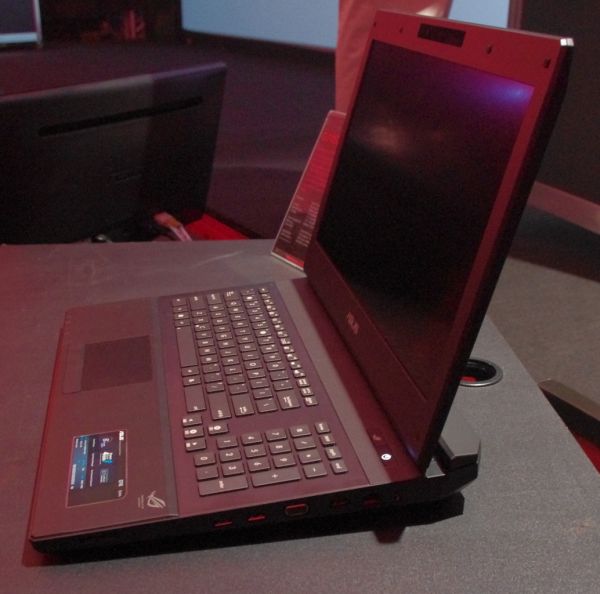
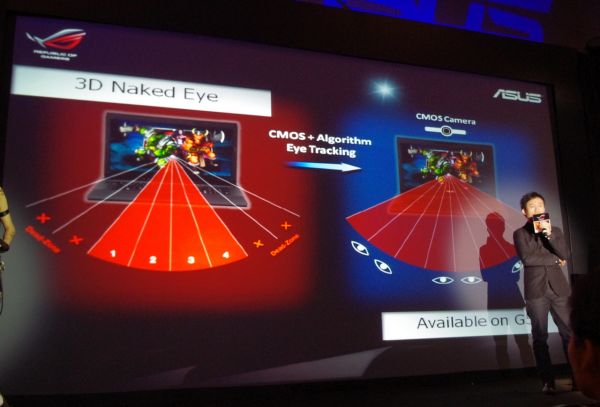






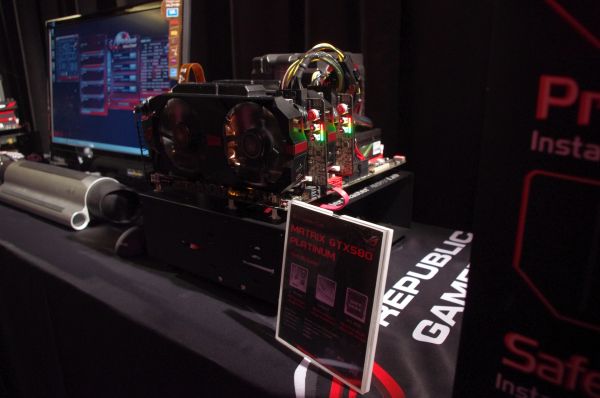
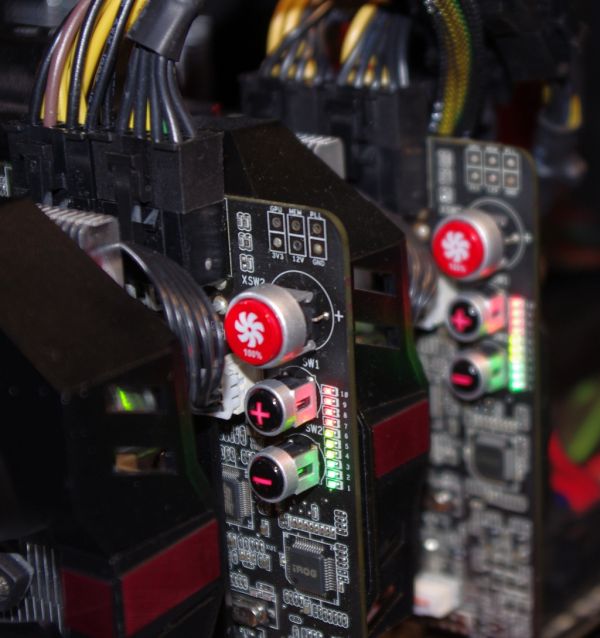
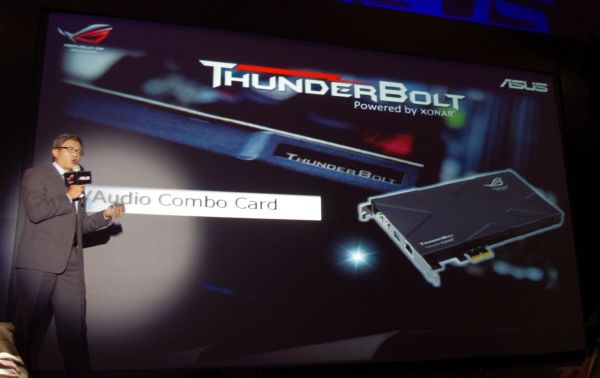
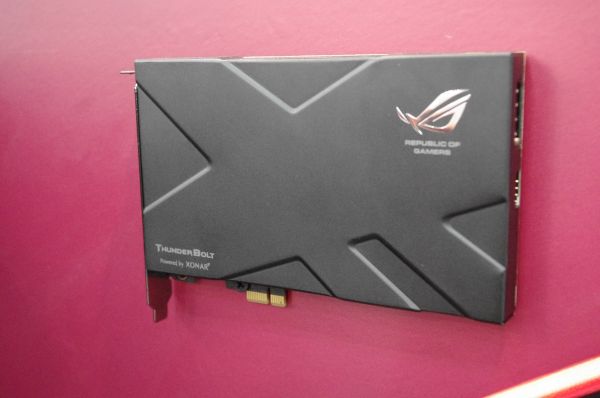








16 Comments
View All Comments
joex444 - Friday, June 3, 2011 - link
"MHz overclocking" is a ridiculous phrase Ian, you meant "overclocking."Zandros - Friday, June 3, 2011 - link
So the Asus “Thunderbolt” cards do not, in actuality, have a Thunderbolt port?Because that makes sense.
Scyler6411 - Friday, June 3, 2011 - link
I actually thought about that too, but I don't think there will be any thunderbolt port. :/anonapon - Friday, June 3, 2011 - link
Any word on the Asus Maximus IV Extreme-Z release date?DarthPierce - Saturday, June 4, 2011 - link
did you guys get an eyes-on with the head tracking glasses free? how was it? any mention of new 15 inch ROG lappys?stromgald30 - Saturday, June 4, 2011 - link
I've always viewed the RoG thing from ASUS as just a marketing gimmick. The RoG motherboards don't really perform any better than other motherboards as long as you're willing to do the overclocking yourself. They just add features like overclocking from your laptop, and other weird, unnecessary features.But, the 3D screen using eye tracking is definitely interesting and the rear laptop exhaust is a good design idea. The rest still seems like more flash that substance though (like that NIC + audio card).
b_wallach - Saturday, June 18, 2011 - link
Didn't really check out the finer details huh? Aside from the extra PCIe slots that carry a faster speed than some when running more video cards, there is the voltage pins and reset buttons, a well built regulator setup these motherboards have more extra's for the real hard core builders. Have ways to check things out if you don't have the right parts or a poor power supply. Really, if you go back and really check them out you will see the difference between them and standard motherboards. It's not that much of a gimmick. Other MFG's that put this kind of hardware and bios charge just as much and I've not seen any that really match this board on everything. ASUS makes so many different boards that it would be a waste of time to design and then build them for a see through gimmick ploy. Just doesn't wash.don_k - Saturday, June 4, 2011 - link
Any word on what the software you mentioned is? Is it OS specific client software, web interface, bios settings?Some more details on the audio side specifications would be great also, if you can :)
Thanks for the reports, very interesting.
Rick83 - Saturday, June 4, 2011 - link
When it's only changing the perspective.Instead it's more of a lightweight TrackIR -replacement system...
warisz00r - Sunday, June 5, 2011 - link
true, i cant see how it can work with multiple viewers too